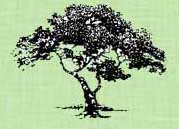Home
A large front yard tree can provide the following benefits each year:*
1. Saves $29 in summertime air conditioning by shading the building and cooling the air (250kWh) about 9% of a typical residential building's total annual air conditioning cost. (This finding assumes tree is west of the residence where it provides maximum shading benefit.)
2. Absorbs 10 lbs. of air pollutants, including 4 lbs. of ozone and 3 lbs. of particulates. (The value of pollutant uptake by the tree is $45 using the local market price of emission reduction credits. Uptake of NOx by the tree (1.07 LB) is equivalent to NOx emitted by a typical car driven 188 miles. (NOx emissions taken from a Sacramento Bee article, Dec. 7, 1997, Forum 2, that lists EPA test results of measured emissions at 4,000 miles, as well as maximum emissions allowed at 50,000 miles for 7 car models and 11 models of light trucks. This calculation assumes 30 grams/yr. Uptake by tree and car emission rate of O.16grams/mile for Ford Taurus at 4,000 miles. Emission rates ranged from 0.06-0.16 for the cars listed.)
3. Intercepts 760 gal of rainfall in its crown, thereby reducing runoff of polluted stormwater
and flooding. This benefit is valued at $6 based on local expenditures for water quality management and flood control. (Interception is relatively low for this deciduous species in a climate with predominately winter precipitation. An evergreen camphor tree in coastal Southern California was estimated to intercept 4,000 gals annually.
4. Cleans 330 lbs. of C02 (90 lbs. C) from the atmosphere through direct sequestration in the tree's wood and reduced power plant emissions due to cooling energy savings. The value of this benefit is $5 assuming the California Energy Commission's price of $30/ton. This tree reduces the same amount of atmospheric C02 as released by a typical car driven 388 miles. Assuming an average emission rate of 0.85 LB/mile, the C02 offset by the tree is equivalent to 388 miles driven. Emission rates ranged from 9,200-14,800 LB/yr. for the cars listed.)
5. Adds about 1 % to the sales price of the property, or about $25 each year when annualized over a 40-year period. This assumes a median residential property sales price of $100,000. (Based on research that found a large front yard tree increased the sales price of residential properties by nearly I %: Anderson, L.M. and Cordell, H.K., 1988. "Residential Property Values Improve by Landscaping with Trees." Southern Journal of Applied Forestry, 9:162-166.)
* in a San Joaquin Valley community like Modesto
This fact sheet is provided by the Center for Urban Forest Research, Pacific Southwest Research Station, USDA Forest
Service, Davis, Califomia,
